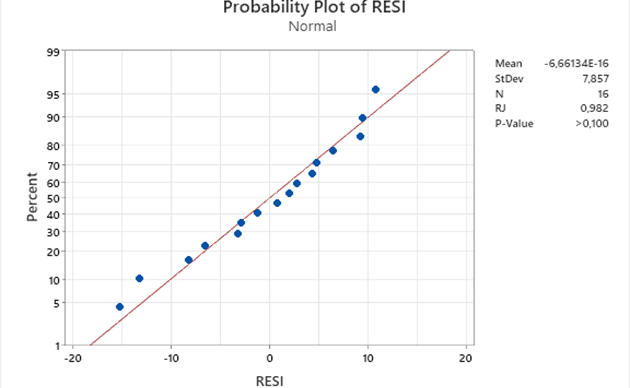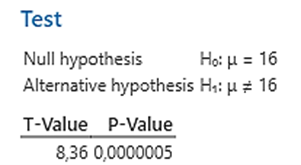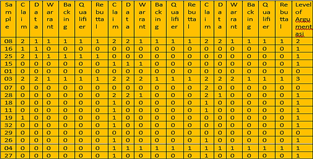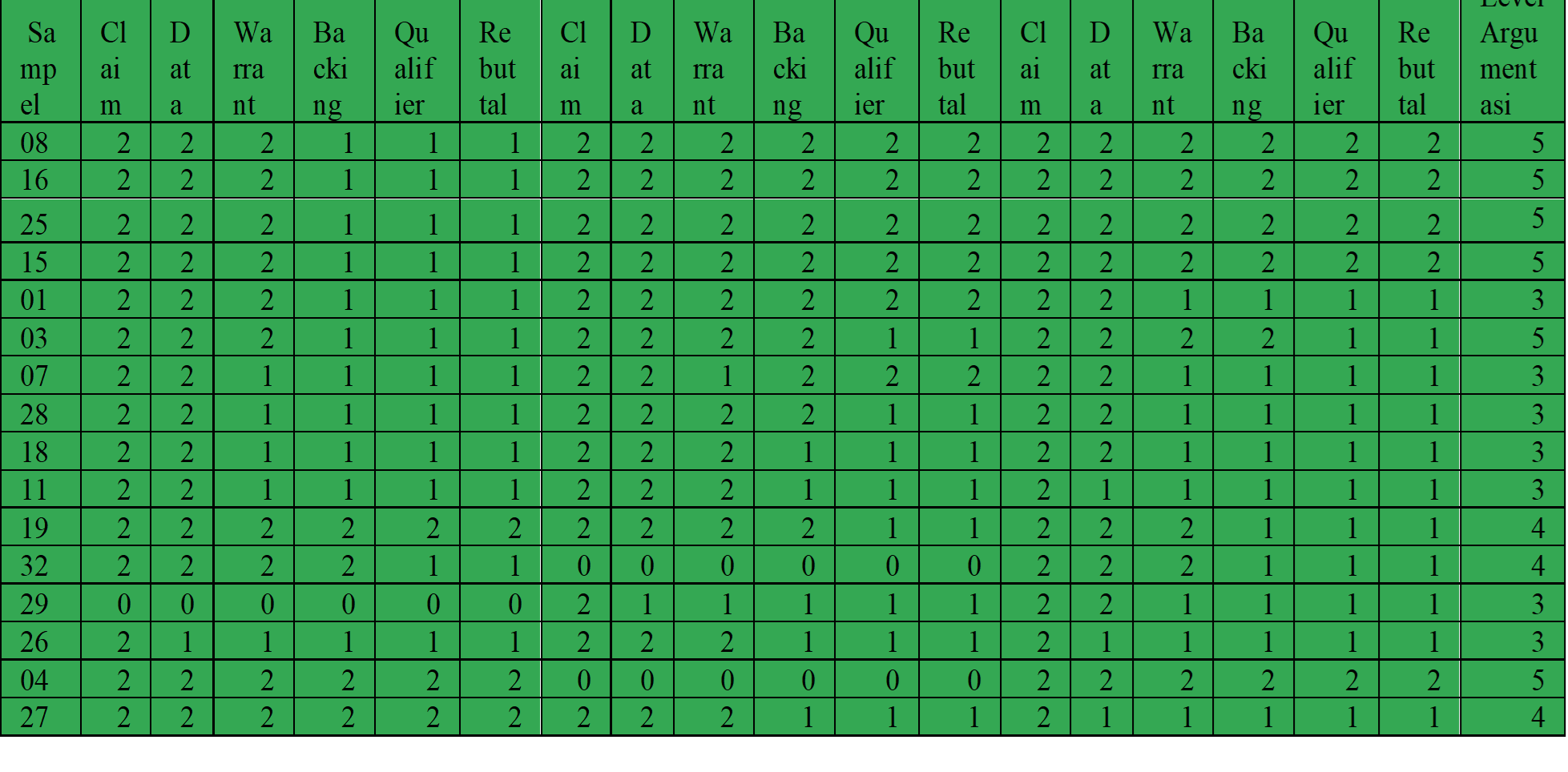The Effectiveness of Using TPS Type Cooperative Learning Model to Improve Argumentation Skills on Chemical Equilibrium Materials
- Dian Novita
- Meyla Dewi Setyorini
- 238-245
- Sep 26, 2024
- Education
The Effectiveness of Using TPS Type Cooperative Learning Model to Improve Argumentation Skills on Chemical Equilibrium Materials
Dian Novita, Meyla Dewi Setyorini
Department of Chemistry Education, Faculty of Mathematic and Natural Sciences, State University of Surabaya, Jl. Ketintang, Gayungan, Surabaya, East Java, Indonesia.
DOI: https://dx.doi.org/10.47772/IJRISS.2024.809020
Received: 22 August 2024; Accepted: 02 September 2024; Published: 26 September 2024
ABSTRACT
This study aims to determine the effectiveness of using the Think Pair Share (TPS) cooperative learning model to improve students’ argumentation skills. The research design used in this study was Pretest-Posttest One Group Design. The sample of this research was students of class XII-MIPA 2 at SMAN 16 Surabaya in the 2023/2024 academic year. This study used an instrument in the form of argumentation skills test. The results showed an increase in argumentation skills of students who were taught with TPS cooperative learning model.
Keywords: Effectiveness, TPS Cooperative, Argumentation Skills, Chemical Equilibrium.
INTRODUCTION
The majority of schools in Indonesia have adopted an independent curriculum with the objective of optimising learning materials, allowing learners sufficient time to explore concepts and strengthen competencies. Furthermore, learners are now expected to master 21st century skills in order to support learning at school and prepare them to enter the world of work. The 21st century skills, as defined by the National Education Association [1], encompass critical thinking, communication, collaboration, and creative thinking. Prior to attaining proficiency in the 4C skills, it is advisable for students to enhance their foundational abilities, including argumentation skills. As outlined by [2], argumentation skills play a pivotal role in science learning, offering students the opportunity to engage in group discussions and express their opinions on a range of concepts, skills, and abilities. This includes the capacity to reason scientifically, which can be practised in the context of chemistry learning.
The Toulmin Argumentation Pattern (TAP) argumentation model identifies six key aspects of argumentation skills: claim, data, evidence, warrant, backing, and rebuttal [3]. The results of a preliminary study conducted at SMAN 16 Surabaya on 7 March 2023, involving 16 respondents, indicate that students’ skills in argumentation are still developing. According to Toulmin’s Argumentation Pattern (TAP), students demonstrate a limited understanding of the components of an argument, with only 38.2% of respondents demonstrating an understanding of claims, 36.5% demonstrating an understanding of evidence, and 25.3% demonstrating an understanding of warrants. Subsequently, researchers will utilise Herlianti’s modified argumentation skills indicators, which offer distinct advantages over other frameworks. These indicators are particularly suited to the assessment of students’ argumentation skills in a personalised manner. However, a group discussion will be held at a later stage in this study, yet the argumentation skills of the students will still be measured on an individual basis.
Table I Herlianti’s Modified Argumentation Skill Indicators Level Model Criteria
| Level | Model | Criteria |
| 1 | Claim | Only provide claims (C) |
| 2 | Claim, Evidence | Providing claims and data (CE) |
| 3 | Claim, Evidence, Warrant | Providing claims, data and guarantors (CEW) |
| 4 | Claim, Evidence, Warrant, Backing | Provide claims, data, underwriters and supporters (CEWB) |
| 5 | Claim, Evidence, Warrant, Backing, Qualifier,d an Rebuttal | Provide claims, data, guarantors, supporters, and quality and or exclusions (CEWBQR) |
(Adapted from Herlianti’s, 2012 )
Furthermore, the preliminary research findings indicated that a significant proportion of students (68.75%) perceived chemical equilibrium material as a challenging concept to comprehend. This is a contributing factor to the observed low level of understanding among students regarding this subject matter. Furthermore, the pre-research results indicated that a significant proportion of respondents (68.75%) identified chemical equilibrium material as a source of difficulty. This is a key factor contributing to the low level of understanding of this material among students. By incorporating this material into the curriculum, it is anticipated that students’ understanding of chemical equilibrium will be enhanced.
The objective of this study was to enhance students’ argumentation skills on chemical equilibrium material. It was postulated that argumentation skills are fundamental abilities that can regulate students’ comprehension of connecting facts with learning concepts. However, in order to improve argumentation skills, it was necessary to employ an appropriate learning model. One such model was the Think Pair Share (TPS) type cooperative learning model. In this study, the TPS type cooperative learning model developed by Frank Lyman and Spencer Kagan was employed with the objective of fostering students’ capacity to collaborate, engage in critical thinking, engage in argumentation, and cultivate social attitudes manifested by mutual assistance in addressing shared challenges [4]. The model is employed because students find it challenging to collaborate with numerous individuals within a single group. Frequently, conflicting perspectives emerge, which impedes their comprehension of the material. Additionally, researchers will utilise Electronic Learner Worksheets (LKPD) to address the limitations of conventional learning media. Many students exhibit a preference for novel learning tools, underscoring the necessity for innovative approaches to enhance engagement. Furthermore, the utilisation of E-LKPD learning media is anticipated to facilitate greater student engagement in chemistry learning, particularly in the context of chemical equilibrium material. The output of this E-LKPD has been designed with a range of engaging features, and it has also been developed to be more accessible to students. This E-LKPD will utilise the liveworksheet website to facilitate student access, thereby enabling students to utilise it from any location. Consequently, the objective of this research is to ascertain the efficacy of employing the TPS type cooperative learning model to enhance argumentation abilities in the context of chemical equilibrium material
METHODS
A. Type and Design of Research
This research is part of an action research study with a qualitative approach using a Pretest-Posttest One Group Design. In this research, only one class will be used as the experimental group, which will be given a pretest before the intervention and a posttest after the intervention. The pretest and posttest results will then be compared to determine the improvement in argumentation skills after the intervention.
B. Research Subject
The sample for this study is the XII MIPA 2 class at SMAN 16 Surabaya in the 2023/2024 academic year, comprising 16 student subjects. The subjects of the study were selected using random sampling.
C. Data Collection Techniques and Instruments
The teaching was conducted using the Cooperative Learning TPS model, with the Think stage represented in
E-LKPD Argumentation as ChemNews. In this stage, students were presented with a question related to a phenomenon in everyday life and required to provide an argument based on their own thoughts. The Pair stage was represented in E-LKPD Argumentation as ChemDiscussion, where students were paired at a table to exchange argumentation. Finally, the Share stage was represented in E-LKPD Argumentation as ChemSharing, where students presented their arguments in front of the class. The aforementioned stages will be represented in E-LKPD Argumentation as follows: ChemDiscussion, where students will be paired at a table to exchange argumentation; and ChemSharing, where students will present their arguments in front of the class.
D. Data Analysis Technique
Additionally, to determine the effectiveness of the cooperative learning TPS model in this research will be using One Sample t-test and N-Gain will be analyzed. For the One Sample t-test, it will begin with a prerequisite test as follows:
- Normality Test: The normality test is used to determine whether the data obtained from the pretest and posttest are normally distributed or not. In this research, the normality test uses Minitab Statistical Software Ver 21. Since the sample data taken consists of 16 student subjects, the normality test uses the Ryan-Joiner test, which is similar to the Saphiro-Wilk test. If the significance value is greater than (>) 0.1, the data is normally distributed. If the significance value is less than (<) 0.1, the data is not normally distributed. After conducting the normality test and obtaining a result that is normally distributed, the homogeneity test is continued.
- Hypothesis Test with One Sample t-test: The hypothesis test is carried out after the data obtained is normally distributed and homogeneous, and the analysis is continued with a hypothesis test using a one sample t-test using Minitab Statistical Software Ver 21. If t calculated < t table, Ho is accepted and Ha is rejected. If t calculated > t table, Ho is rejected and Ha is accepted.
- N-Gain Test: The N-Gain test is a test that can provide a general overview of the improvement in learning scores before and after the application of a certain intervention [5]. Therefore, in this study, the N-Gain test can be used to observe the improvement in the application of the cooperative learning-based E-LKPD Argumentation product. The formula for the N-Gain test is as follows:
| N-Gain Score | Criteria |
| g > 0,7 | High |
| 0.70 ≥ g ≥ 0,3 | Medium |
| g < 0,30 | Low |
The criteria for evaluating students’ argumentation skills are determined according to the guidelines provided in the rubric for evaluating argumentation skills, as shown in the following table:
Table III The rubric for evaluating argumentation skills
| Aspect | Criteria | Score |
| Claim | Students do not choose or answer the Claim aspect | 0 |
| Student choose claim but it is not the true answer | 1 | |
| Students choose the correct and appropriate claim | 2 | |
| Data | Students do not answer the Evidence aspect or do not answer the Claim aspect | 0 |
| Students answer the Evidence aspect, but the evidence provided does not support the selected claim (provided that the previous indicator gets a minimum score of 1) | 1 | |
| Students answer the Evidence aspect with the evidence provided supporting the selected Claim (provided that the previous indicator gets a minimum score of 2) | 2 | |
| Warrant | Students do not provide further justification (warrant) for the evidence provided or students do not answer the Evidence aspect | 0 |
| Students provide further justification (Warrant) for the evidence provided, but do not make a connection between Claim and Evidence (provided that the previous indicator gets a minimum score of 1) | 1 | |
| Students provide further justification (Warrant) for the evidence provided which is able to link Claim and Evidence (provided that the previous indicator gets a minimum score of 2) | 2 | |
| Backing | Students do not provide support (Backing) or do not answer the Warrant aspect | 0 |
| Students provide support (Backing) but it is not relevant or does not support the justification (provided that the previous indicator gets a minimum score of 1) | 1 | |
| Students provide relevant support (Backing) or support justification reasons (provided that the previous indicator gets a minimum score of 2) | 2 | |
| Qualifi-er | Students do not provide qualifications or do not answer the Backing aspect | 0 |
| Students provide a qualification (Qualifier) but do not support the justification (provided that the previous indicator received a minimum score of 1) | 1 | |
| Students provide qualifications (Qualifiers) that support justification reasons (provided that the previous indicator received a minimum score of 2) | 2 | |
| Rebutt-al | Students do not provide objections (Rebuttal) or do not answer the Qualifier aspect | 0 |
| Students provide a rebuttal (Rebuttal) but it is not accurate (provided that the previous indicator gets a minimum score of 1) | 1 | |
| Students provide an appropriate rebuttal (provided that the previous indicator gets a minimum score of 2) | 2 |
RESULTS AND DISCUSSION
The given test is about a test of argumentation skills that has three questions with pretest and posttest scores. These scores are then used to calculate the change in argumentation skills using a one-sample t-test. However, before performing the one-sample t-test, the data must first be checked for normality using the Ryan-Joiner normality test to determine whether the used data is normally distributed or not.
The normality test is conducted using the Minitab 21 software. After conducting the normality test, it was found that the P-Value (significance level) was greater than 0.1, indicating that the data is normally distributed.
Fig. 1. Normality graph of data processing results on argumentation skills
Once it is known that the data to be tested is normally distributed, the next step is to carry out a one sample t-test to determine the increase that occurs between the pretest and posttest.
Fig. 2. One sample t-test results using Minitab 21 software
Based on the data above, the results of the t test with a significance level of 95% show that t count > t table, namely 8.36 > 1.746 so that Ho is rejected and Ha is accepted. Ha stated that there was a significant difference between the pretest and posttest. Apart from that, it can also be concluded that based on the one sample t-test that has been carried out, the Argumentation E-LKPD developed is said to be effective in training argumentation skills. Apart from that, the magnitude of the increase in students’ argumentation abilities was also measured using the n-gain score test which shows an increase in the argumentation abilities of each student and also an increase in argumentation abilities in each aspect of argumentation.
Table IV Results of n-gain Argumentation Skills for Each Student
| No. | No. Student Absence | Pretest (%) | Posttest (%) | N-Gain | Criteria |
| 1. | 01 | 0.00 | 29.00 | 0.81 | High |
| 2. | 03 | 25.00 | 29.00 | 0.36 | Medium |
| 3. | 04 | 12.00 | 24.00 | 0.50 | Medium |
| 4. | 07 | 2.00 | 27.00 | 0.74 | High |
| 5. | 08 | 23.00 | 33.00 | 0.77 | High |
| 6. | 11 | 2.00 | 24.00 | 0.65 | Medium |
| 7. | 15 | 3.00 | 33.00 | 0.91 | High |
| 8. | 16 | 2.00 | 33.00 | 0.91 | High |
| 9. | 18 | 2.00 | 25.00 | 0.68 | Medium |
| 10. | 19 | 2.00 | 31.00 | 0.85 | High |
| 11. | 25 | 7.00 | 33.00 | 0.90 | High |
| 12. | 26 | 2.00 | 23.00 | 0.62 | Medium |
| 13. | 27 | 2.00 | 28.00 | 0.76 | High |
| 14. | 28 | 8.00 | 26.00 | 0.64 | Medium |
| 15. | 29 | 0.00 | 15.00 | 0.42 | Medium |
| 16. | 32 | 1.00 | 19.00 | 0.51 | Medium |
The table above shows the n-gain score of each student’s argumentation skills. From the table above, there are 8 students who obtained an n-gain score ≥ 0.7 in the high category, which shows that the argumentation abilities of 8 students have increased in the high category. Apart from that, there were 8 students who obtained an n-gain score ≤ 0.7 in the medium category, which shows that the argumentation abilities of these 8 students had increased in the medium category.
Table V Results of n-gain Argumentation Skills Per Aspect
| No. | Aspects of Argumentation Skills | Pretest (%) | Posttest (%) | N-Gain | Criteria |
| 1. | Aspek Claim | 36,5 | 93,8 | 0,90 | High |
| 2. | Aspek Evidence | 19,8 | 88.5 | 0,86 | High |
| 3. | Aspek Warrant | 13,5 | 78,1 | 0,75 | High |
| 4. | Aspek Backing | 9,4 | 66,7 | 0,63 | Medium |
| 5. | Aspek Qualifier | 9,4 | 61,5 | 0,57 | Medium |
| 6. | Aspek Rebuttal | 9,4 | 61,5 | 0,57 | Medium |
| N-Gain Argumentation Skills | 0,715 | High | |||
The table above shows an n-gain score of 0.715, which means an n-gain score ≥ 0.7 is included in the high category. This proves that the developed Argumentation E-LKPD is effectively used to train students’ Argumentation skills. Apart from that, each argumentation component also experienced an increase from the pretest and posttest. The Claim aspect has an n-gain score of 0.90 in the high category, the Evidence aspect has an n-gain score of 0.86 in the high category, the Warrant aspect has an n-gain score of 0.75 in the high category, the Backing aspect has a score n-gain is 0.63 in the medium category, the Qualifier aspect has an n-gain score of 0.57 in the medium category, the Rebuttal aspect has an n-gain score of 0.57 in the medium category.
Table VI Pretest scores of students
Table VII Posttest scores of students
Based on the table above, it can be seen that 6 students already have argumentation skills at level 5, 3 students have argumentation skills at level 4, 6, and 7 students have argumentation skills at level 3.
CONCLUSION
The TPS cooperative learning model was declared effective for improving students’ argumentation skills in terms of the analysis of the t test results with a significance level of 5%, it was found that t count > t table was 3.59 > 1.746 so that Ho was rejected and Ha was accepted, the n-gain score from the cognitive test questions chemical equilibrium is 0.90 with the high category, and the n-gain score for students’ argumentation skills is 0.715 with the high criteria. Apart from that, 6 students already have argumentation skills at level 5, 3 students have argumentation skills at level 4, 6, and 7 students have argumentation skills at level 3.
REFERENCES
- National Education Association. 2015. Preparing 21st Century Students for a Global Society.
- Osborne, J. F. 2010. An Argument for Arguments in Science Classes. Phi Delta Kappan, 91, 62-65. https://doi.org/10.1177/003172171009100413
- Toulmin, Stephen. 1958. The Uses of Argument. Cambridge: Cambridge University Press.
- Suhardi, Y. 2018. Penerapan Model Pembelajaran Kooperatif Tipe Tps(Think Pair Share) Untuk Meningkatkan Hasil Belajar Peserta Didik Pada Mata Pelajaran Kimia Tentang Termokimia Di Kelas XI MIPA-2 Sma Negeri 7 Kota Bogor. Educate : Jurnal Teknologi Pendidikan, 3(1), 53. https://doi.org/10.32832/EDUCATE.V3I1.995
- Hake, R. R. 1999 Analyzing Change/Gain Scores. USA: Dept of Physics Indiana University.
- Herlianti, Y., dkk. 2012. Kualitas Argumentasi pada Diskusi Isu Sosiosaintifik Mikrobiologi Melalui Weblog. Jurnal Pendidikan IPA Indonesia. Vol. 1 No. 2, 168-177.





